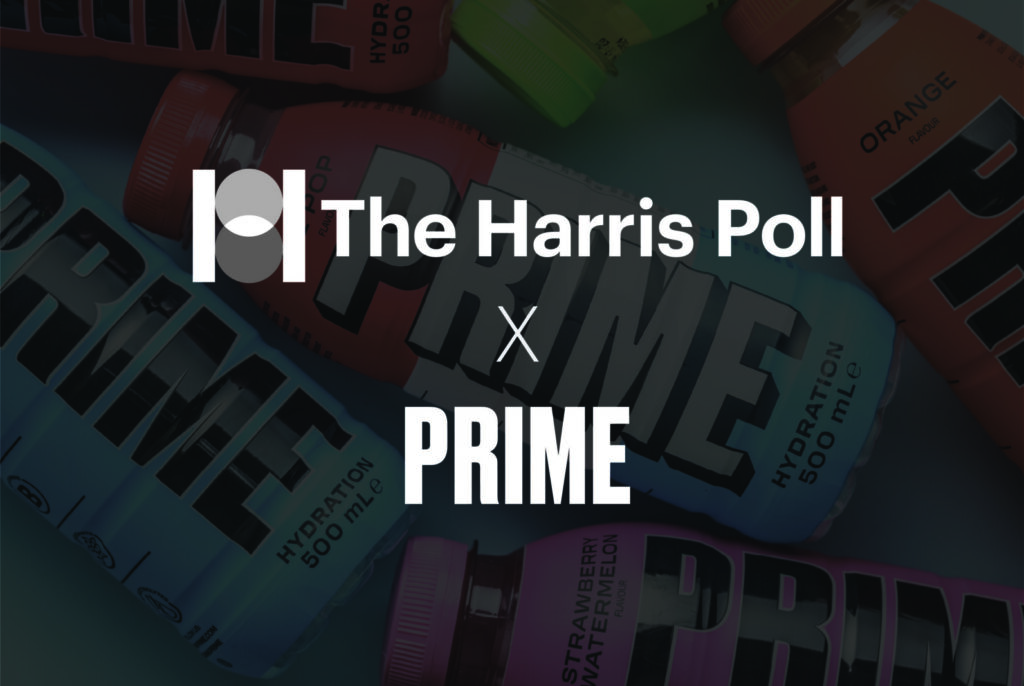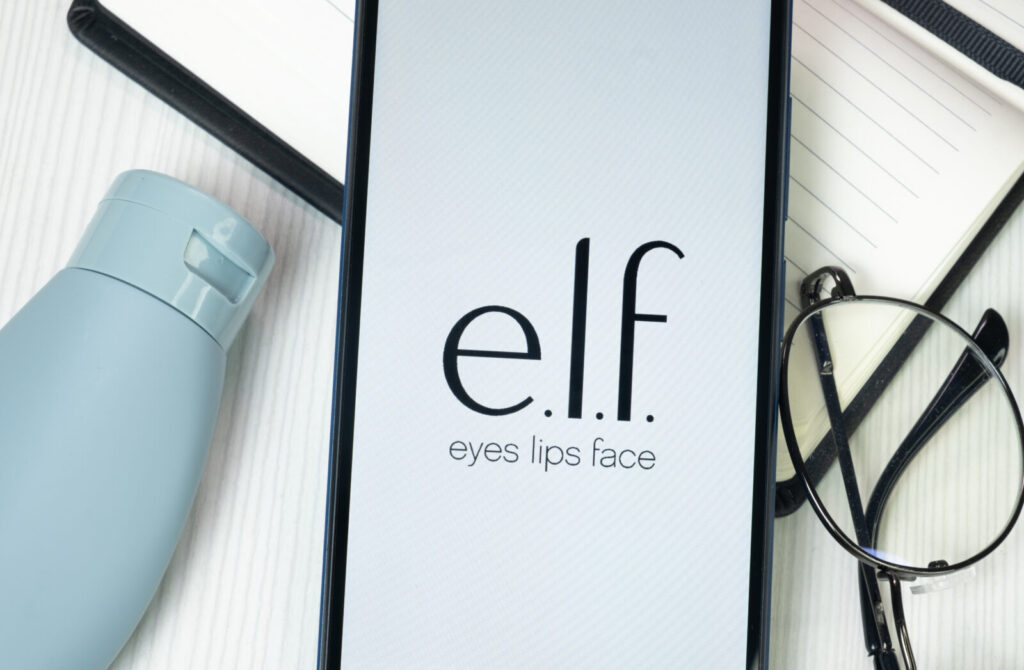Brief • 5 min Read
The latest trends in culture and society from The Harris Poll
For years, American women have closed the gap at work with men in the workplace. Before the pandemic, the U.S. had more women in the workforce than ever, with an increasing number of women in managerial roles and professional occupations with higher (but not yet equal) earning power.
COVID essentially erased those gains made by professional women, who, in our new studies, face unpredictable work schedules, growing childcare challenges, defrayed careers, and economic crises. Women experienced most pandemic-related job losses, and there are still gaps in compensation between men and women. And while women make up nearly half the total workforce (44%), fewer than half are managers (41%), even as more women account for the college-education labor force (50.7%) than men.
Where does this leave working women today? For this week’s special report, we document the lived experiences of American women in a post-pandemic workplace by drawing on three new Harris studies released this week. First, in our America This Week survey, fielded February 10th to 12th among 2,080 US adults, more than nine in ten working women (92%) are concerned about the economy and inflation, with (80%) concerned about affording their living expenses (more than half 53%, are very concerned). Additionally, nearly half (44%) are worried about losing their job, including (56%) of BIPOC women, (12%-pts higher than white working men on average).
Next, our annual State of Inequity study with Hue details the persistent burdens that BIPOC women are facing in their professional lives despite the rushing commitments of businesses to embrace diversity, equity, and inclusion. And lastly, in “The Mom Tax,” we detail the tradeoffs and penalties that American working mothers continue to face with childcare support in a new survey with Fortune.
The study results paint a picture of progress imperiled by indifferent policy and poor performance of businesses to support working mothers and working women of color in particular. Thanks for your attention, and please share these reports.
State of Inequity: HUE-Harris Poll
Our newly released State of Inequity report with Hue, featured this week in Fast Company, illuminates wide disparities along racial lines in workplace opportunity, compensation, and experience in a post-pandemic labor market.
Headline: Over two hundred thousand Black and Latina Women have disappeared from the workforce since the pandemic’s beginning. And many of these women have stopped looking for new jobs, making them invisible to unemployment statistics and ineligible for federal benefits. This data complicates the statistics released last week by the Labor Department, which reported an unemployment rate of 3.4%—a 50-year low.
There Has Been Very Little Overall Progress Since June 2020
- Most BIPOC employees report their employer has not instituted racial awareness training (82%) nor has increased recruiting efforts toward racially diverse hiring (81%):

- This comes as a surprise to HR: While over eight in ten (84%) of BIPOC employees report their company has not addressed the mental/emotional impact of discrimination on its employees of color since June 2020, HR says: “Mission Accomplished: Over nine in ten HR professionals (91%) we surveyed say the various diversity-related initiatives their companies have implemented are effective.
Women of Color Speak Out Against Persistent Barriers
- BIPOC women are more likely than their white male colleagues to detail the shortcomings of their companies regarding equity in career development:

- One in four BIPOC women report not being paid fairly and in a comparable way to other colleagues at their level across their company – 1.5x more often than white men.
- And BIPOC women are 2x as likely not to be paid fairly and in a comparable way to other colleagues across their company compared to white men.
- BIPOC women are nearly 2x as likely to report they have not had the same opportunities and chances to succeed as any other person within their company compared to white men.
BIPOC Women Continue to Feel Unseen, Unheard, & Unsupported
- Two in five BIPOC women reported feeling exhausted or burned out last year because of their workplace.
- And BIPOC women are 2x more likely to report they have felt fatigued related to racial tension or issues at work in the last six months compared to white men.
- And more BIPOC women are not comfortable being fully themselves at work, 2x as likely compared to white men.
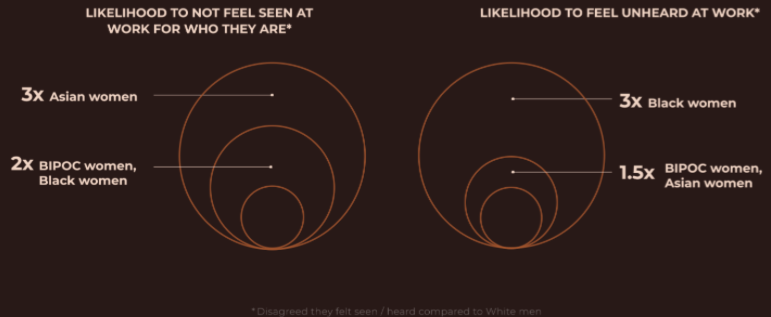
Even in the face of Workplace Hardships, BIPOC Women are Investing in Themselves.
- Nearly 2x as many BIPOC women report gaining new skills or education to become a more competitive job candidate compared to white Americans (45% v. 27%).
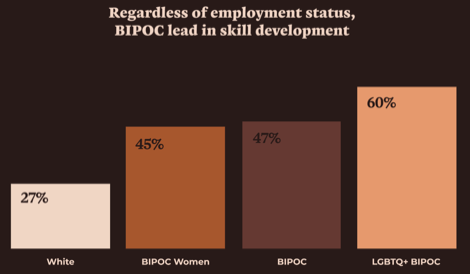
- BIPOC women are 2x as likely to have considered leaving their current or most recent employer due to the emotional burden they faced related to their race/ethnicity compared to white men.
- And nearly three in five BIPOC women report they are not comfortable working at a company that lacks racially/ethnically diverse leadership, even if there is diversity at lower levels.
- Yet, over three in five (61%) say they would stay with an employer if there were more promotion opportunities.
Takeaway: The sobering, insightful analysis from Harris’ Dami Rosanwo and HUE’s Fahad Khawaja reveals the inequities caused by a lack of corporate action over the past three years. Since the murder of George Floyd, corporations have rushed to join the DEI movement. And after #MeToo this should have signaled heightened attention to working women of color. But this study frankly says otherwise. Most daunting is the growing gap between their reported experiences and the nine-in ten HR departments we surveyed, who told us their racial equity initiatives had been “highly effective.” In hindsight, businesses treated #BLM like crisis management and put in temporary stopgap measures vs. meaningful vesting programs that they are tracking and adapting. Not all companies, but many, according to these numbers.
The Mom Tax: Fortune-Harris Poll
A Harris Poll-KinderCare collaboration previously found that working parents increasingly want and need more childcare support. In our latest survey with Fortune, we delve into the consequences of that shortcoming. What we find is that rising childcare costs continue to keep mothers out of the workforce.
There’s A Limit On How Much Women Will Spend Their Paycheck on Childcare
- If childcare costs eat away a quarter of their paychecks, over half of women (57%) would consider becoming a stay-at-home parent (SAHP), with close to a third (31%) saying their upper limit would be up to half their paycheck.
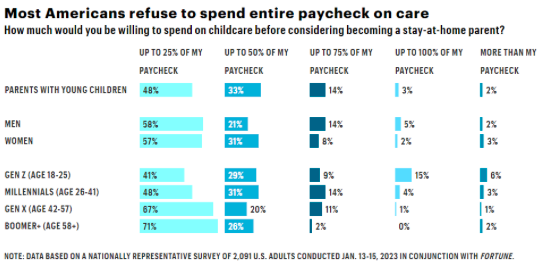
Childcare is Keeping Women at Home
- A fifth (21%) of stay-at-home mothers (SAHMs) report that financial difficulties in affording childcare were a reason for staying home, along with (13%) staying home due to limited childcare availability in their area.
- Over a third of current SAHMs (35%) say they never planned to stay home with their child(ren).
- Similar numbers of current and former SAHMs agree they felt forced into becoming a SAHP (36%, 35%)
- Moreover, researchers who analyzed the recent DOL childcare data found that a (10%) increase in median childcare prices was associated with (1%-pt) lower county-level maternal employment rates.
- Nine in ten women (89%) believe that more parents would continue to work if more affordable childcare was accessible:
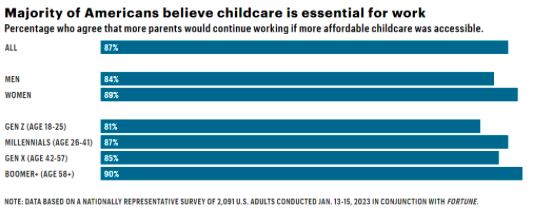
And The Career Hits Linger When Mothers Return to the Workforce
- Around 4 in 10 former and current SAHMs agree that their career has been negatively impacted by staying home with their children (40%, 37%) – which rises to over half of SAHPs with children under the age of 5 (52%).
- And three-quarters of women (74%) agree that mothers get penalized more in the workforce after staying home than fathers (v. men: 62%) – rising to (78%) among former SAHMs.
- About half (51%) of women believe that stay-at-home parents rarely recover professionally – even after they return to the workplace. A similar sentiment was held among current and former SAHMs (56%, 53%).
- The lifetime estimated losses associated with the so-called “motherhood penalty” can range from $161,000 to $600,000, according to the Women’s Institute for a Secure Retirement. Moreover, the Institute for Women’s Policy Research finds that (43%) of women experience at least one year with no income – nearly twice the rate of men.
Takeaway: “Since the pandemic, women’s jobs have disproportionately been affected. Women have made up 100% of net labor force leavers since February 2020, according to an analysis by the National Women’s Law Center. Moreover, as of January 2023, there were 217,000 fewer women in the labor force than in February 2020. And the current childcare crisis may get worse before it gets better. During the pandemic, Congress allocated more than $50 billion to help the childcare industry. Those typically trickled down to individual daycares, in-home providers, and childcare centers in the form of stabilization grants that reportedly helped approximately 200,000 providers stay open. But this temporary support is set to phase out later this year, which may spark another round of permanent childcare center closures” (Fortune).
Lastly, check out the latest America This Week monthly summary slide deck and tabs for more insights into inflation and shifting consumerism. Download the new January report here.
Subscribe for more Insights
Subscribe to our newsletter for the latest trends in business, politics, culture, and more.
Download the Data
This survey was conducted online within the U.S. by The Harris Poll from February 10th to 11th among a nationally representative sample of 2,080 U.S. adults.
Download
Subscribe for more Insights
Subscribe to our newsletter for the latest trends in business, politics, culture, and more.
Download the Data
This survey was conducted online within the U.S. by The Harris Poll from February 10th to 11th among a nationally representative sample of 2,080 U.S. adults.
DownloadRelated Content

